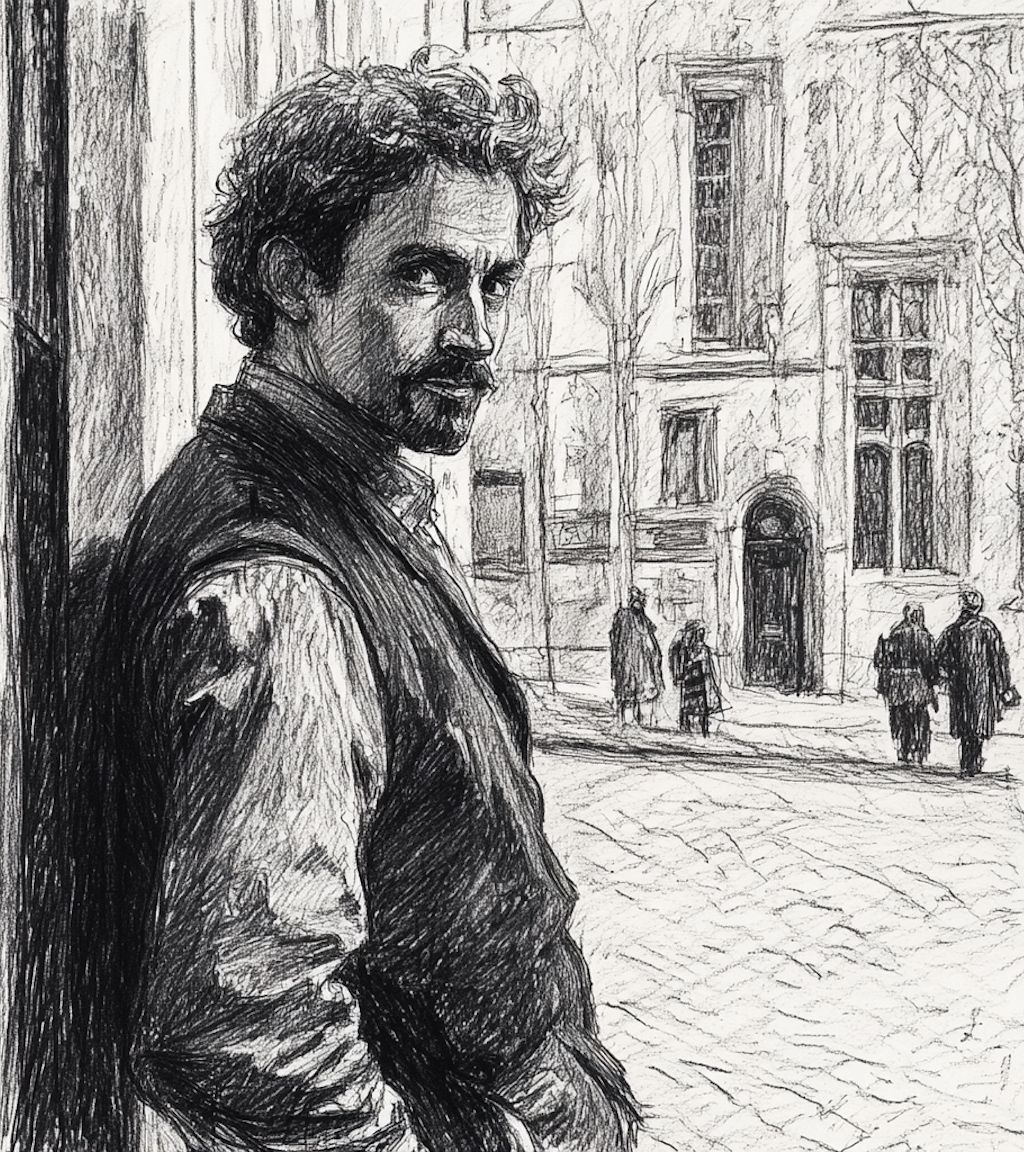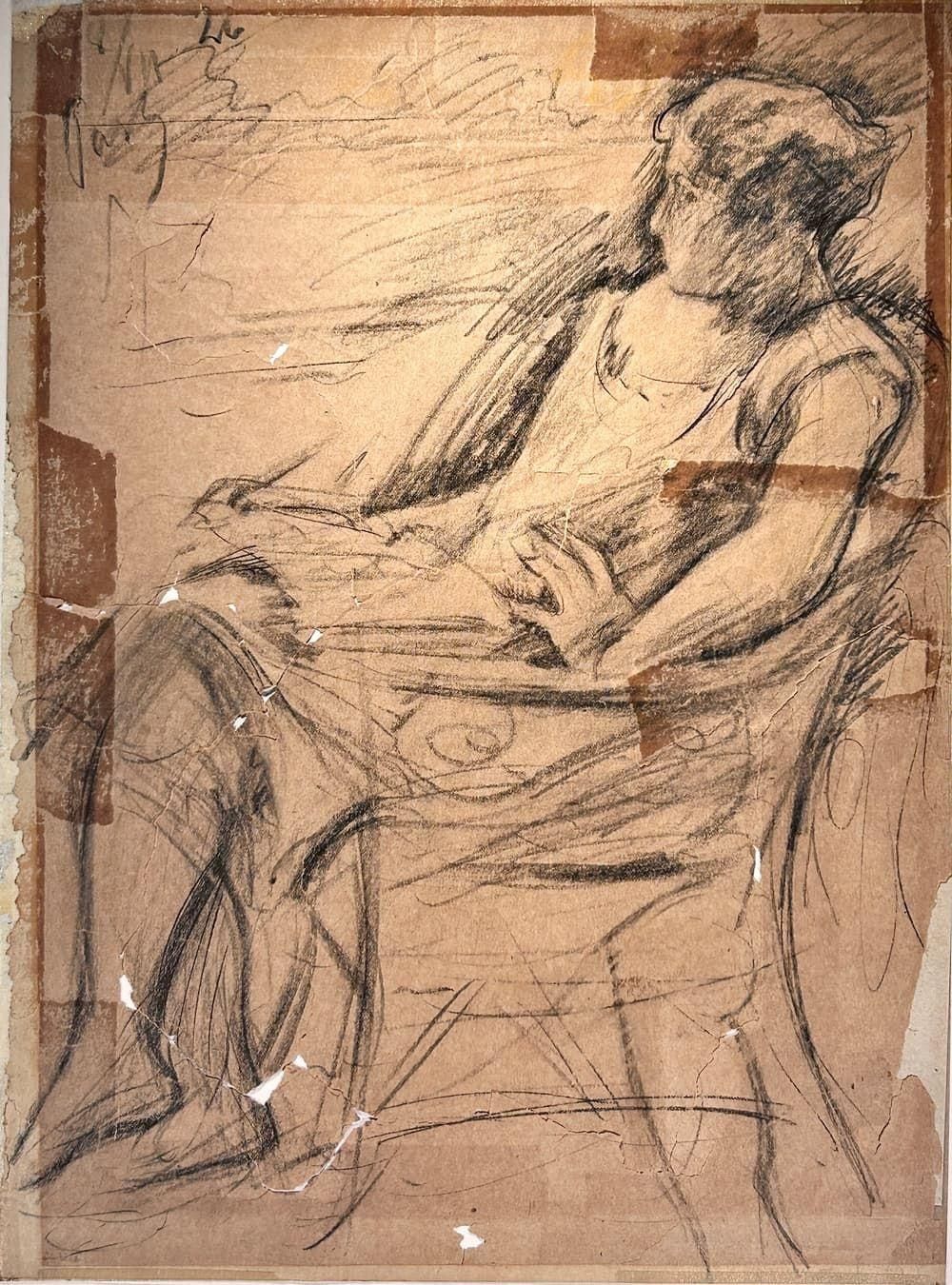
Leonid Pasternak
Leonid Pasternak studied art in Munich and Moscow and became a professor at the Moscow School of Painting, Sculpture and Architecture. Pasternak was part of the Russian intelligentsia and closely associated with key cultural figures of the Silver Age, including Leo Tolstoy, whose life and works he frequently illustrated. He was also the father of the renowned writer Boris Pasternak.
Pasternak was known for his sensitive and impressionistic drawing and painting style. Working in oils, pastels, and pencil, he created portraits, literary illustrations, and domestic scenes that captured emotional nuance and the subtleties of light. His style combined realism with a lyrical, almost atmospheric quality that drew influence from French impressionism and the Russian Peredvizhniki. He was also a pioneer in Russian graphic art and one of the first artists in Russia to use pastels extensively.
Among Pasternak’s most notable works are his portraits of Leo Tolstoy, illustrations for War and Peace and Resurrection, and intimate family scenes such as The Pasternak Family at the Table. His work was exhibited widely in Russia and abroad, including shows in Munich, Paris, and London. After his death, retrospectives of his work have been held at institutions such as the Ashmolean Museum (Oxford), the Jewish Museum (New York), and the State Tretyakov Gallery (Moscow), helping to preserve his legacy as a bridge between Russian and European art traditions.
Collected by major institutions and notable private collectors:
— Musée d'Orsay— Ashmolean Museum
— Fitzwilliam Museum
— The Pushkin State Museum of Fine Arts
Notable sales and auction records:
— Portrait of Mrs Shalit, £102 thousand at Christie's, London, 2005— At K. A . Korovin's: 'old-time songs' (Chaliapin and the artists), £90 thousand at Christie's, London, 2006
— Still life with hyacinths, tulips, hollyhocks and peonies, £87,6 thousand at Christie's, London, 2008
Artworks and Paintings
Biography and Artistic Career Highlights
Leonid Osipovich Pasternak was born on April 3, 1862, in Odessa, into the family of a merchant. His childhood was spent in the cultural atmosphere of the multinational port city. From an early age, he showed an interest in drawing, making sketches of portraits and genre scenes. His parents wanted him to pursue a practical profession, so he first attended gymnasium and then enrolled in medical studies, but his passion for art proved stronger.
1881 — began studying at the medical faculty of Moscow University, but soon transferred to the law faculty, while continuing his painting studies.
1883 — moved to Munich, where he entered the Academy of Fine Arts. There he developed as an artist under the influence of European realist schools.
1885 — held his first exhibition in Moscow, which brought him critical attention.
1889 — married the pianist Rosalia Kaufman; the couple had children, including Boris Pasternak, the future famous writer.
1890s — taught at the Moscow School of Painting, Sculpture, and Architecture. He was among the first instructors to introduce drawing from life and observation into the curriculum.
1893 — awarded the title of Academician of Painting for his work «Letter from the Front».
1894–1900 — collaborated with journals and publishers, creating illustrations for works of Russian classics.
1902 — invited by Leo Tolstoy to Yasnaya Polyana; created numerous sketches and studies of the writer and his family. These works became important documents of the era and established Pasternak’s reputation as a sensitive portraitist.
1905 — took active part in art exhibitions, including those of the «Union of Russian Artists» association.
1914–1917 — painted scenes of wartime life while continuing his teaching activities.
1921 — due to his wife’s illness and the difficult political situation, the family emigrated to Germany. They first settled in Berlin, where the artist exhibited actively and taught.
1930s — moved to the United Kingdom. In London, he continued to work, painting portraits of contemporaries and taking part in exhibitions.
1935 — a solo exhibition in Oxford, dedicated to Tolstoy and Russian culture, secured his international recognition.
On May 31, 1945, Leonid Pasternak died in Oxford, England. His life and work combined the Russian realist tradition with European artistic influences. He left behind a significant legacy in painting and graphic art, remembered as a master of portraiture and illustration, and as an artist who preserved in his art the spiritual atmosphere of the turn of the 19th–20th centuries.

